The Pekingese, also known as the Peke, is a toy breed of royal descent. Bred as companions for Chinese emperors and nobility these dogs are quite regal in appearance and give off an independent, sophisticated air. Often forming close bonds with their owners, this breed is a loyal companion. Their “lion’s mane” of thick fur matches their strong and courageous nature. Read on to learn more about the Pekingese.
Description of the Pekingese
The Pekingese is a truly royal dog. From their dignified manner, to the plumage of fur around their necks, they have the appearance of a small lion, this breed packs a lot into its small size.
They are compact and muscled underneath their thickly furred exterior and feel rather heavy when you pick them up. The Pekingese has a distinctly large head with a flat broad top that is balanced by their wide set and ever watchful eyes.
A loving and affectionate breed with their family, the Pekingese is often wary of strangers and will need to know that they are friends before inviting them into their royal circle. But once a member of this exclusive club you will find that these dogs are a friendly and enjoyable breed to hang around.
Known for their thick and flowing coat, the Pekingese is a real showstopper when it comes to their looks. This fur accentuates their long and low figure. These dogs come in any variety of colors, which makes for some truly beautiful and interesting looking Pekingese.
Life Expectancy and Size
The Pekingese is a small dog that faces other problems some small breeds have. Their short muzzle makes them prone to eye injuries as they don’t have anything in front of them to guide and protect their large and inquisitive eyes. Other health problems may shorten their life but in general the Pekingese is a healthy breed that lives an average of 12 – 14 years.
Working with a reputable breeder can help you screen and prepare for potential health issues, but the first line of defense is always being ready for any health problem your dog may face.
As a member of the toy group these small dogs clock in at 6 – 9 inches, and don’t weigh more than 14 pounds. But their dense bodies and voluminous fur will make them appear bigger than they are.
Protective Ability
With big round eyes that never miss a beat, the Pekingese is an ever-vigilant watchdog that will always be quick to alert you to the arrival of strangers. His loyal and lion-like personality may mean your Pekingese will defend you until the end, but standing less than a foot tall and weighing no more than a sack of potatoes he will probably not get very far! But you can appreciate his courage and valor all the same.
Training
The Pekingese is an intelligent dog that forms a tight bond with their owners. They are quick to learn and do very well with positive training. They require lots of love and affection and using this positive praise consistently in training is key.
Another important tool is treats. The Pekingese are smart dogs and know better than to work for nothing. Offer your dog a reward for their good behavior and you will be rewarded in return with an eager to learn and responsive dog.
Be wary of overfeeding, though, as the Pekingese can be prone to becoming overweight and this can put a lot of stress on their small bodies. Cut down on meals or increase exercise if you notice that training is affecting your dog’s waistband.
Early socialization is an important step in training your Pekingese as it can help them with being friendly to strangers, other dogs, and can teach them not to bark excessively.
Energy Level
The Peke is a calm and serene dog, who enjoys spending much of the day relaxed on a fine pillow watching over everyone. But he can still be quite playful, and will love partaking in games that allow them to bond with you.
It is important to make sure that any playtime with your Pekingese is not too rough and tumble. While these dogs may think they are as big as a lion they are not and can be easily injured, especially around the eyes.
What Living with a Pekingese is Like
This is an affectionate but independent breed that
loves spending time with its family, but also enjoys quality time alone. You can expect moments of outward affection from your Pekingese, but don’t be surprised if sometimes he would rather just hang out with himself.
Small, yet not afraid to defend themselves, Pekingese dogs are not a good breed for families with small children. What kids may think is fun, can be quite scary for a Pekingese. Always supervise any interaction between a Peke and a small child.
These small and often relaxed dogs enjoy the finer comforts in life and do well in a home that can recognize the nobility of this breed. They descend from royalty and they know it!
Care of the Pekingese
The Pekingese is an even-keeled dog. They require a loving home that is safe and calm. Often independent, the Peke does best when given a gentle and tranquil environment.
Environmental Needs
With a thick and downy double coat, the Peke is a cold weather dog. They need to stay cool to keep from overheating. Often owners will travel with their dogs on ice packs to help keep them comfortable. Heat is not a friend to this breed. If you live in a warm climate having A/C is a must for these dogs.
Exercise Needs
Bred as the calm and regal companions of Chinese royalty, the Peke was made to be a refined and unruffled dog. They do not need much movement to stay fit. A healthy diet and daily walk are often plenty to keep them happy and healthy.
While daily walks are usually enough to satisfy these dogs, supplemental playtime can be a great option if your Peke needs more stimulation.
Providing lots of soft toys are a good way to keep your Pekingese mentally engaged and happy.
Shedding and Grooming
The Peke’s thick coat requires a decent amount of work to keep it mat free. An hour a week, or 2 – 3 times, is often enough to make sure their coat is healthy. This breed sheds
seasonally, so you can expect an influx of loose fur a few times a year. The rest of the year, the breed sheds moderately.
Because their thick fur can easily pick up dust and dirt an occasional bath is a good way to keep them looking their best. Have your Peke’s nails trimmed regularly to keep him from being in pain.
Ideal Home Environment
The Pekingese is a self-assured dog that does best in a home that can give him the royal treatment he deserves. These dogs do not do well with small children and wouldn’t be well suited to someone with a very active lifestyle. Preferring to lounge on a soft pillow than run in the mud, the Peke is a well-groomed dog that likes his peace and independence.
This breed makes a great watchdog and while they think they are also excellent guard dogs, their small size prevents them from doing much damage above the ankle.
The Pekingese can have health problems that may lead to a shorter life or be expensive to deal with.
Health Concerns
The blunted muzzle of the Pekingese means it is important to choose a dog that has wide nostrils or a larger nose. Breathing can become a problem in dogs with small nostrils that don’t allow enough air in. Their short nose makes overheating a serious concern, especially during exercise.
The Peke can be prone to many different types of eye, skin, and orthopedic problems. Working with your breeder is an important step to learn and test for the possible problems of your breed. Regular check-ups and keeping your Peke clean can help mitigate some of these problems.
Behavior Problems
The Peke can become shy around strangers if not properly socialized. Starting early can ease their already-wary attitude towards strangers, and can make it easier for your Pekingese to live with other animals.
These dogs are also prone to lots of barking. Training them early can help teach your dog when it is and is not appropriate to bark.

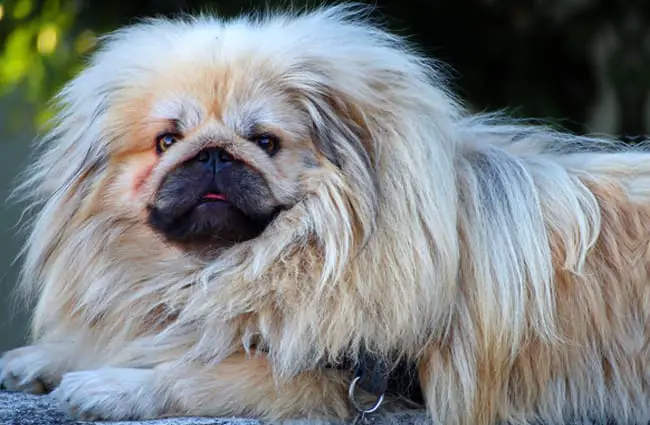

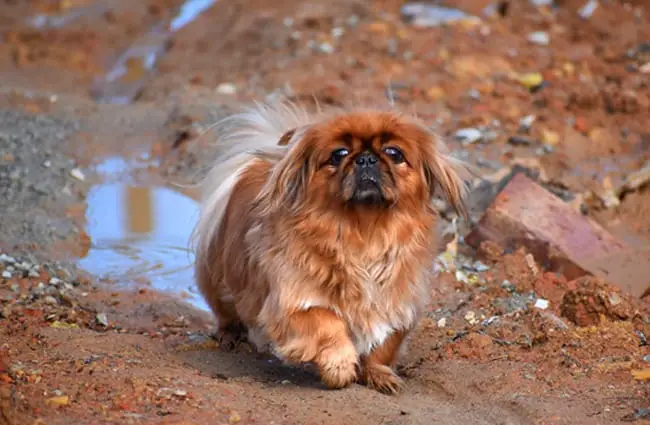
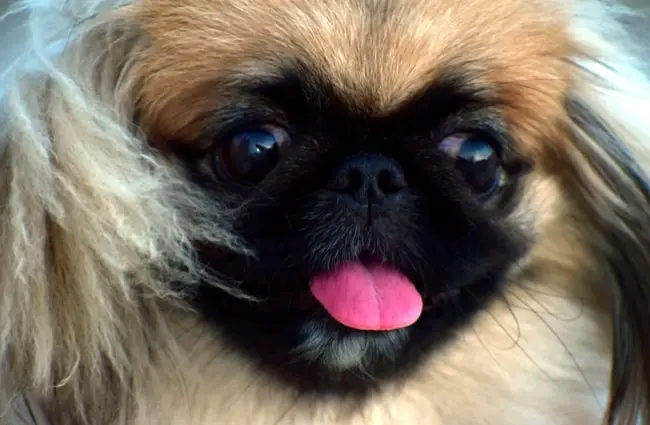
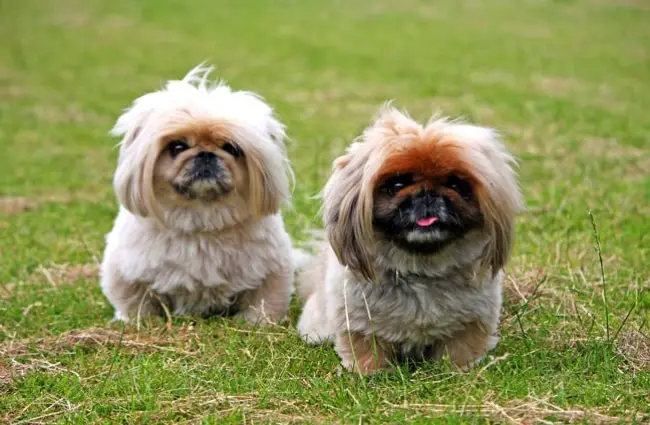
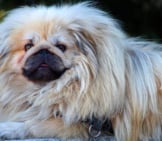
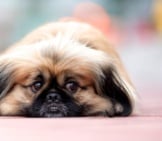






![Red Angus Closeup of a beautiful Red Angus cowPhoto by: U.S. Department of Agriculture [pubic domain]https://creativecommons.org/licenses/by/2.0/](https://animals.net/wp-content/uploads/2020/03/Red-Angus-4-100x75.jpg)

